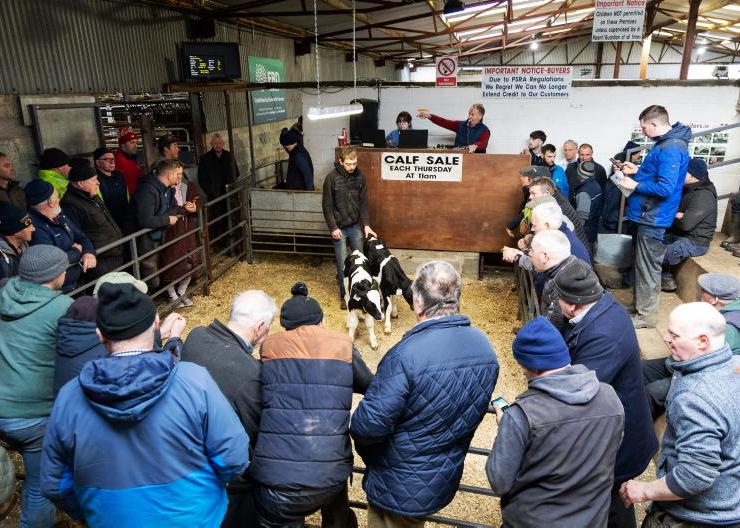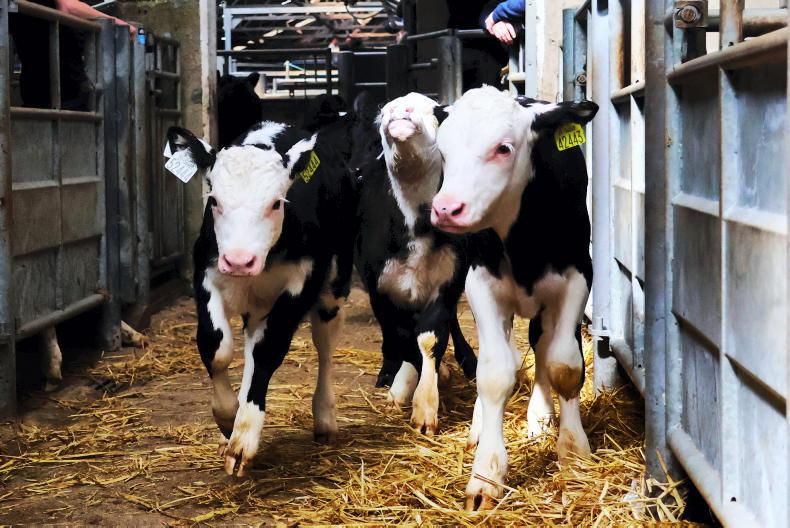The swing in temperature in the calf-rearing house could swing in excess of 15°C between day and night over the coming days. This can cause issues if the housing environment is not correct.
In an ideal world, the ambient temperature in the calf-rearing shed would be a constant 15°C.
While this is highly unlikely even for normal early-spring temperatures, there a number of things farmers can do to minimise the impact of sub-optimal temperatures.
1. Deep straw bed
Bedding in the rearing shed should never be skimped on at any point. In periods of cold weather, farmers really need to focus on providing a deep, dry straw bed for calves. Young calves will actually nest in straw, which helps to keep them insulated.
A good rule of thumb is that when you put your palm firmly on to the bedding, the straw should be up to your elbow.
Bedding also needs to be dry, as a wet lie will reduce the calf’s core temperature.
Calves can spend the majority of the day lying down. When they do, so the surface area of the calf in contact with the ground is much greater than when they are standing, so the potential for heat loss from the calf to the floor is much greater.
To see if bedding is dry and sufficient, kneel down on the straw bed for a minute. When you stand up, if your knees are wet, the bedding is insufficient.
2. Draught free
Calf-rearing sheds need to have good air ventilation, but also need to be draught-free at calf level.
Physically get down to calf level and see if there are draughts in your calf accommodation. Common problem areas are along feed barriers, under gates and around doors.
A well-placed bale of straw can go a long way to remove draughts at calf level.
Creating micro-climates at the back of calf pens allows calves somewhere sheltered to lie during cold periods of weather. These can be simply constructed in almost all calf housing.
3. Calf jackets
While they shouldn’t be needed for every calf, calf jackets can be a good addition for young or weak calves during periods of extreme cold.
The science behind a calf jacket is that it is trying to maintain that warmer environment for the calf so that it can concentrate most of its energy intake to growth rather than just maintaining its body temperature.
Jackets should be breathable and washable and, where fitted, should be regularly checked and adjusted to ensure they fit correctly on the growing calf.










SHARING OPTIONS